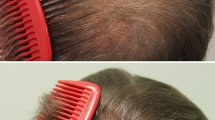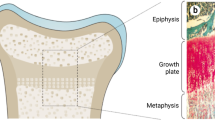Abstract
Purpose
Previous work has suggested that progression of experimental scoliotic curves in pinealectomized chicken and bipedal C57BL6 mice models may be prevented and reversed with Tamoxifen treatment. Raloxifene is another Selective Estrogen Receptor Modulator (SERM) with estrogen agonist effects on bone and increases bone density but with fewer side effects on humans. To investigate whether scoliosis progression in bipedal C57Bl6 mice model could be prevented with SERM treatment and the mechanisms associated with this effect.
Methods
Eighty C57BL6 mice were rendered bipedal and divided into Tamoxifen (TMX), Raloxifene (RLX) and control groups. TMX and RLX groups received orally administered TMX and RLX for 40 weeks. Anteroposterior X-ray imaging and histomorphometric analysis (at 20th and 40th weeks) were performed.
Results
At 20th week, TMX and RLX groups displayed higher rates (p = 0.033, p = 0.029) and larger curve magnitudes (p = 0.018). At 40th week, curve rates were similar between the groups but the curve magnitudes in TMX and RLX groups were smaller (p = 0.001). Histomorphometry revealed that treated animals had higher trabecular density (p = 0.04), lower total intervertebral disc (p = 0.038) and growth plate volumes (p = 0.005) and smaller vertebral bodies (p = 0.016).
Conclusions
Treatment with TMX or RLX did not reduce the incidence of scoliosis but decreased the curve magnitudes at 40 weeks. The underlying mechanism associated with the decrease in curve magnitudes may be the early maturation of growth plates, thereby possible deceleration of the growth rate of the vertebral column and increase in bone density. RLX is as effective as TMX in preventing the progression of scoliotic curves in melatonin deficient bipedal mice.





Similar content being viewed by others
References
Ahn UM, Ahn NU, Nallamshetty L et al (2002) The etiology of adolescent idiopathic scoliosis. Am J Orthop (Belle Mead NJ) 31:387–395
Inoue M, Minami S, Kitahara H et al (1998) Idiopathic scoliosis in twins studied by DNA fingerprinting: the incidence and type of scoliosis. J Bone Joint Surg Br 80:212–217
Inoue M, Minami S, Nakata Y et al (2002) Prediction of curve progression in idiopathic scoliosis from gene polymorphic analysis. Stud Health Technol Inform 91:90–96
Lowe TG, Edgar M, Margulies JY et al (2000) Etiology of idiopathic scoliosis: current trends in research. J Bone Joint Surg Am 82-A:1157–1168
Mei YA, Lee PP, Wei H, Zhang ZH, Pang SF (2001) Melatonin and its analogs potentiate the nifedipine-sensitive high-voltage-activated calcium current in the chick embryonic heart cells. J Pineal Res 30:13–21
Miller NH (1999) Cause and natural history of adolescent idiopathic scoliosis. Orthop Clin North Am 30:343–52, vii
Miller NH (2002) Genetics of familial idiopathic scoliosis. Clin Orthop Relat Res 462:60–64
Wang WJ, Yeung HY, Chu WC et al (2011) Top theories for the etiopathogenesis of adolescent idiopathic scoliosis. J Pediatr Orthop 31:S14–S27
Dubousset J, Queneau P, Thillard MJ (1983) Experimental scoliosis induced by pineal and diencephalic lesions in young chickens. Its relation with clinical findings in idiopathic scoliosis. Orthop Trans 7:7–12
Machida M, Dubousset J, Imamura Y, Iwaya T, Yamada T, Kimura J (1995) Role of melatonin deficiency in the development of scoliosis in pinealectomised chickens. J Bone Joint Surg Br 77:134–138
Machida M, Dubousset J, Imamura Y et al (1994) Pathogenesis of idiopathic scoliosis: SEPS in chicken with experimentally induced scoliosis and in patients with idiopathic scoliosis. J Pediatr Orthop 14:329–335
Machida M, Dubousset J, Satoh T et al (2001) Pathologic mechanism of experimental scoliosis in pinealectomized chickens. Spine (Phila Pa 1976) 26:E385–E391
Turgut M, Yenisey C, Uysal A, Bozkurt M, Yurtseven ME (2003) The effects of pineal gland transplantation on the production of spinal deformity and serum melatonin level following pinealectomy in the chicken. Eur Spine J 12:487–494
Turhan E, Acaroglu E, Bozkurt G, Alanay A, Yazici M, Surat A (2006) Unilateral enucleation affects the laterality but not the incidence of scoliosis in pinealectomized chicken. Spine (Phila Pa 1976) 31:133–138
Bagnall K, Raso VJ, Moreau M, Mahood J, Wang X, Zhao J (1999) The effects of melatonin therapy on the development of scoliosis after pinealectomy in the chicken. J Bone Joint Surg Am 81:191–199
Bagnall KM, Beuerlein M, Johnson P, Wilson J, Raso VJ, Moreau M (2001) Pineal transplantation after pinealectomy in young chickens has no effect on the development of scoliosis. Spine (Phila Pa 1976) 26:1022–1027
Akel I, Kocak O, Bozkurt G, Alanay A, Marcucio R, Acaroglu E (2009) The effect of calmodulin antagonists on experimental scoliosis: a pinealectomized chicken model. Spine (Phila Pa 1976) 34:533–538
Machida M, Dubousset J, Yamada T et al (2006) Experimental scoliosis in melatonin-deficient C57BL/6J mice without pinealectomy. J Pineal Res 41:1–7
Akel I, Demirkiran G, Alanay A, Karahan S, Marcucio R, Acaroglu E (2009) The effect of calmodulin antagonists on scoliosis: bipedal C57BL/6 mice model. Eur Spine J 18:499–505
Francucci CM, Romagni P, Boscaro M (2005) Raloxifene: bone and cardiovascular effects. J Endocrinol Invest 28:85–89
Vogel VG, Costantino JP, Wickerham DL et al (2006) Effects of tamoxifen vs raloxifene on the risk of developing invasive breast cancer and other disease outcomes: the NSABP Study of Tamoxifen and Raloxifene (STAR) P-2 trial. JAMA 295:2727–2741
Cano A, Dapia S, Noguera I et al (2008) Comparative effects of 17beta-estradiol, raloxifene and genistein on bone 3D microarchitecture and volumetric bone mineral density in the ovariectomized mice. Osteoporos Int 19:793–800
Delmas PD, Bjarnason NH, Mitlak BH et al (1997) Effects of raloxifene on bone mineral density, serum cholesterol concentrations, and uterine endometrium in postmenopausal women. N Engl J Med 337:1641–1647
Goff CW, Landmesser W (1957) Bipedal rats and mice; laboratory animals for orthopaedic research. J Bone Joint Surg Am 39-A:616–622
Machida M, Dubousset J, Yamada T, Kimura J (2009) Serum melatonin levels in adolescent idiopathic scoliosis prediction and prevention for curve progression–a prospective study. J Pineal Res 46:344–348
Qiu XS, Tang NL, Yeung HY et al (2007) Melatonin receptor 1B (MTNR1B) gene polymorphism is associated with the occurrence of adolescent idiopathic scoliosis. Spine (Phila Pa 1976) 32:1748–1753
Moreau A, Wang DS, Forget S et al (2004) Melatonin signaling dysfunction in adolescent idiopathic scoliosis. Spine (Phila Pa 1976) 29:1772–1781
Letellier K, Azeddine B, Parent S, Labelle H, Rompré PH, Moreau A, Moldovan F (2008) Estrogen cross-talk with the melatonin signaling pathway in human osteoblasts derived from adolescent idiopathic scoliosis patients. J Pineal Res 45:383–393
Cheung WY (1980) Calmodulin plays a pivotal role in cellular regulation. Science 207:19–27
Xia Z, Storm DR (1997) Calmodulin-regulated adenylyl cyclases and neuromodulation. Curr Opin Neurobiol 7:391–396
Cheng JC, Guo X, Sher AH (1999) Persistent osteopenia in adolescent idiopathic scoliosis. A longitudinal follow up study. Spine 24 (Phila Pa 1976):1218–1222
Cheng JC, Qin L, Cheung CS et al (2000) Generalized low areal and volumetric bone mineral density in adolescent idiopathic scoliosis. J Bone Miner Res 15:1587–1595
Chen WJ, Qiu Y, Zhu F et al (2008) Vitamin D receptor gene polymorphisms: no association with low bone mineral density in adolescent idiopathic scoliosis girls. Zhonghua Wai Ke Za Zhi 46:1183–1186
Inoue M, Minami S, Nakata Y et al (2002) Association between estrogen receptor gene polymorphisms and curve severity of idiopathic scoliosis. Spine (Phila Pa 1976) 27:2357–2362
Dede O, Akel I, Demirkiran G, Yalcin N, Marcucio R, Acaroglu E (2011) Is decreased bone mineral density associated with development of scoliosis? A bipedal osteopenic rat model. Scoliosis 6:24
Urbauer, Jeffrey L, Ramona J, Bieber-Urbauer, Carrie E. Jolly (2009) Mechanistic Basis of Calmodulin Mediated Estrogen Receptor Alpha Activation and Antiestrogen Resistance. Georgia Univ Research Foundation Inc, Athens
Leboeuf D, Letellier K, Alos N, Edery P, Moldovan F (2009) Do estrogens impact adolescent idiopathic scoliosis? Trends Endocrinol Metab 20:147–152
Acaroglu E, Akel I, Alanay A, Yazici M, Marcucio R (2009) Comparison of the melatonin and calmodulin in paravertebral muscle and platelets of patients with or without adolescent idiopathic scoliosis. Spine (Phila Pa 1976) 34:E659–E663
Machida M, Murai I, Miyashita Y, Dubousset J, Yamada T, Kimura J (1999) Pathogenesis of idiopathic scoliosis. Experimental study in rats. Spine (Phila Pa 1976) 24:1985–1989
Janssen MM, de Wilde RF, Kouwenhoven JW, Castelein RM (2011) Experimental animal models in scoliosis research: a review of the literature. Spine J 11:347–358
Acknowledgments
This study was supported by research grants from the “Yves Cotrel Foundation”, Paris, France.
Conflict of interest
None.
Author information
Authors and Affiliations
Corresponding author
Additional information
First three authors (Drs. Demirkiran, Dede and Yalcin) have equally contributed to the research project as well as the preparation of the manuscript. Their present order of appearance is arbitrary in this sense.
Rights and permissions
About this article
Cite this article
Demirkiran, G., Dede, O., Yalcin, N. et al. Selective estrogen receptor modulation prevents scoliotic curve progression: radiologic and histomorphometric study on a bipedal C57Bl6 mice model. Eur Spine J 23, 455–462 (2014). https://doi.org/10.1007/s00586-013-3072-2
Received:
Revised:
Accepted:
Published:
Issue Date:
DOI: https://doi.org/10.1007/s00586-013-3072-2




